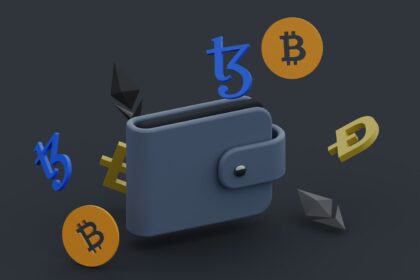Starting investment in blockchain-based tokens requires focused research on market capitalization, liquidity, and development team credibility. Prioritize assets with transparent roadmaps and active communities to minimize risks common among newcomers.
For beginners, understanding network utility and tokenomics is key to evaluating potential value growth. Look into use cases such as decentralized finance, smart contracts, or digital collectibles to assess practical adoption beyond speculative hype.
This guide breaks down step-by-step methods for analyzing project fundamentals, verifying whitepapers, and comparing exchanges offering secure access. Clear metrics like daily trading volume and historical price trends help build confidence in initial selections without overwhelming complexity.
How to Choose Your First Cryptocurrency
When selecting an initial digital asset for investment, prioritizing well-established projects with transparent development teams and clear use cases reduces risks associated with volatility and fraud. Bitcoin (BTC) and Ethereum (ETH) often serve as prime examples due to their extensive networks, liquidity, and proven security protocols.
Understanding the technical foundation behind a token is fundamental for beginners aiming to build a sustainable portfolio. Factors such as consensus mechanism, transaction throughput, and smart contract capabilities provide insights into long-term viability beyond mere market capitalization or hype.
Key Criteria for Asset Selection
An objective approach to asset evaluation includes examining:
- Network Security: Proof-of-Work versus Proof-of-Stake algorithms impact decentralization levels and energy consumption; Bitcoin’s SHA-256 mining offers robust security but at high power costs, whereas Ethereum’s transition to PoS increases efficiency while maintaining resilience.
- Development Activity: Frequent updates on platforms like GitHub indicate active maintenance. For example, Cardano (ADA) demonstrates consistent code releases supporting its layered architecture.
- Use Case Practicality: Tokens facilitating decentralized finance (DeFi), non-fungible tokens (NFTs), or supply chain management present tangible applications enhancing adoption potential.
A comparative analysis table clarifies these aspects:
An investment guide for newcomers emphasizes starting with manageable amounts in assets that combine stability with growth prospects. Diversification across different blockchain types–public vs private, permissioned vs permissionless–can mitigate systemic risks linked to regulatory changes or technological failures.
The purchasing process involves setting up secure wallets compatible with selected assets, understanding exchange fees, and enabling two-factor authentication for protection against unauthorized access. Utilizing hardware wallets or cold storage enhances safety during prolonged holding periods.
Taking incremental steps by tracking performance metrics such as transaction volumes, network activity, and community engagement helps refine decision-making skills over time. Educational resources including whitepapers, developer forums, and reputable analytics platforms support a deepening comprehension necessary for confident participation in the evolving ecosystem.
Assess Project Credibility
Researching the credibility of a blockchain initiative is fundamental before any investment decision. Key indicators include the transparency of the development team, the presence of verifiable technical documentation such as whitepapers, and consistent progress updates on public repositories like GitHub. For a beginner, understanding these elements provides clarity on whether a project has a solid foundation or if it is speculative without substantive backing.
Evaluating how a network functions technically also matters significantly. One should examine consensus mechanisms–Proof of Work, Proof of Stake, or hybrid models–and assess their security implications and energy efficiency. Projects that publish third-party audits of their smart contracts or protocols add an additional layer of trustworthiness in the selection process for digital assets.
Key Factors in Verifying Authenticity
To guide newcomers through this process, consider breaking down the investigation into core components:
- Team Credentials: Check LinkedIn profiles and previous projects to confirm expertise in cryptography, software development, and finance.
- Community Engagement: Active forums, social media interaction, and developer responses illustrate ongoing commitment.
- Partnerships and Collaborations: Associations with reputable companies or institutions often reflect greater legitimacy.
A practical example can be seen in Ethereum’s early days: despite initial skepticism around its novel smart contract capabilities, its transparent roadmap and open-source code encouraged widespread adoption. Contrastingly, some projects have failed due to anonymous teams and unverifiable claims, which serve as cautionary tales for cautious investors.
Diving deeper into technical data helps refine the selection strategy. Metrics such as transaction throughput (TPS), network latency, and decentralization degree provide tangible insights into operational viability. Projects reporting real-world use cases or pilot programs demonstrate functional application rather than theoretical promise alone.
This methodical approach arms prospective investors with objective criteria rather than relying on hype or market trends. By prioritizing verified facts over speculation, individuals can build a robust portfolio grounded in credible projects with sustainable potential growth.
Compare Coin Market Metrics
Market capitalization is a primary metric to evaluate when investigating potential digital asset investments. It represents the total value of all circulating coins multiplied by the current price. Higher market caps often indicate established projects with significant liquidity, reducing volatility risks for newcomers. For example, Bitcoin and Ethereum hold dominant market caps exceeding hundreds of billions USD, which reflects broad adoption and network security.
Trading volume offers insight into daily liquidity and activity levels on exchanges. A coin with consistent high volume ensures easier entry and exit without major price slippage. A project like Binance Coin (BNB) frequently records volumes surpassing several billion dollars daily, signaling robust market participation. Low-volume tokens may pose challenges for beginners due to limited buyer interest and increased manipulation risk.
Understanding Additional Key Metrics
The circulating supply versus maximum supply ratio clarifies inflationary or deflationary tendencies within a token’s economics. Coins with a fixed maximum supply, such as Bitcoin’s 21 million cap, provide scarcity that can support long-term value appreciation. Conversely, tokens with unlimited or very high max supplies might experience dilution pressures unless demand grows proportionally.
Another valuable indicator is the project’s age combined with network fundamentals like transaction throughput and active addresses. Older networks tend to have more stable infrastructures; for instance, Litecoin operates since 2011 with thousands of transactions per day, indicating operational reliability. Examining these technical parameters alongside social engagement metrics helps guide thoughtful asset selection aligned with individual investment goals and risk tolerance.
Evaluate Wallet Accessibility
Access to a secure and user-friendly wallet is fundamental when starting an investment in digital assets. Wallets serve as the gateway to managing and transacting tokens, making their accessibility a critical factor in the selection process. For newcomers, prioritizing wallets with intuitive interfaces, clear backup options, and compatibility with multiple devices simplifies interaction and reduces the risk of asset loss.
Many wallets provide varying degrees of accessibility depending on platform support–mobile, desktop, hardware, or web-based solutions. Understanding these distinctions early aids in aligning technical capabilities with personal preferences and security requirements. For example, mobile wallets like Trust Wallet offer ease of use for on-the-go transactions but may lack advanced features found in hardware wallets such as Ledger or Trezor.
Key Factors Influencing Wallet Usability
User Interface (UI) and User Experience (UX) are pivotal for beginners who might feel overwhelmed by complex setups. A clean interface reduces entry barriers and enhances confidence during initial interactions. Wallets like Exodus combine graphical representations of portfolios with straightforward navigation, which has proven helpful in learning environments.
Backup and Recovery Options must be evaluated carefully. Seed phrases or private keys should be easy to store securely yet accessible when needed. Some wallets incorporate biometric authentication or encrypted cloud backups to balance convenience with protection against unauthorized access.
- Example: MetaMask employs password protection alongside seed phrase recovery, suitable for browser-based access but requiring cautious handling due to phishing risks.
- Case Study: Hardware wallets isolate private keys offline, minimizing attack surfaces but necessitating physical possession for access.
Cross-Platform Compatibility allows seamless transitions between devices without compromising security. Many investors appreciate synchronization between mobile applications and desktop clients so that portfolio management remains uninterrupted regardless of environment changes.
The accessibility of a wallet directly influences transactional speed and error rates during fund transfers–critical aspects often overlooked by novices. Selecting a solution that matches individual technical comfort levels while supporting essential features fosters smoother engagement with digital currencies.
This guide encourages approaching wallet choices as part of a broader strategy involving risk management and usability assessment rather than merely seeking popular options. Beginners benefit from testing several wallets through small trial investments before committing significant resources, ensuring alignment between expectations and real-world performance.
Understanding Transaction Fees: A Critical Factor in Cryptocurrency Selection
Transaction fees significantly influence both the cost-efficiency and speed of blockchain operations, making them a pivotal consideration for any newcomer aiming to make an informed investment decision. Early research into fee structures across various networks reveals stark differences–for example, Bitcoin’s average fee can surge above $5 during peak demand, whereas layer-2 solutions like Lightning Network reduce costs to fractions of a cent, offering scalable alternatives.
Investors starting their journey should analyze fee mechanisms beyond surface-level comparisons. Ethereum’s shift toward EIP-1559 introduced a dynamic base fee burned per transaction, affecting supply inflation and potentially long-term asset value. This evolution highlights how transaction economics intertwine with network security and tokenomics, emphasizing the importance of continuous monitoring as protocols evolve.
Key Technical Insights and Future Implications
- Fee volatility directly impacts usability: Networks with unpredictable fees can deter regular use, particularly for microtransactions or small-value transfers common among beginners.
- Layered scaling solutions are reshaping economics: Rollups and sidechains promise drastically reduced fees while maintaining decentralized security guarantees–essential knowledge for strategic portfolio diversification.
- On-chain governance models influence fee policies: Some blockchains allow stakeholders to vote on fee parameters, which may affect future cost structures and network incentives.
- Cross-chain interoperability introduces complex fee dynamics: Bridging assets between chains often incurs multiple layers of fees; understanding these can prevent unexpected costs during asset movement.
A methodical approach combining quantitative analysis of historical fee data with qualitative assessment of protocol roadmaps equips beginners to select blockchain environments aligned with their investment goals. As innovation accelerates–such as Ethereum’s transition to proof-of-stake reducing gas consumption or emerging zero-knowledge proofs optimizing throughput–the impact on transaction expenses will become increasingly profound.
This guide encourages a mindset that views transaction fees not merely as costs but as signals reflecting network health, scalability prospects, and economic design philosophies. Adequate comprehension empowers confident decisions amid the expanding ecosystem where nuanced factors dictate long-term viability and return potential.





